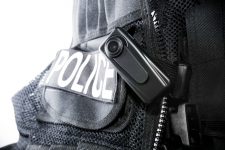Police Body Cameras could be used as Evidence of Domestic Violence in Court

The rollout of police body cameras was announced earlier this year.
Although costing millions of dollars, the initiative has been greeted optimistically as a positive step towards reducing crime and police misconduct, and quickly resolving disputed versions of events.
Police Association President Scott Weber hopes that the footage will be valuable in helping magistrates to actually visualise alleged crime scenes and criminality – from misbehaving members of the community, to smashed windows, crying children and general ‘devastation’.
Civil rights groups hope that the cameras will make it less likely that police will use heavy-handed tactics against individuals – although we’ll have to wait and see whether the footage that is against police interests will conveniently go ‘walkabout’ or the cameras will ‘malfunction’, as is sometimes claimed to be the case with police in-car footage already.
Many police are already wearing their body cameras to scenes of domestic violence but, due to rules of evidence, are rarely able to get the evidence admitted in court.
But proposed new laws accompanying the rollout may change this, ensuring that this kind of evidence is no longer excluded through evidence rules.
Domestic violence is a significant problem in Australian society; and while rates of domestic violence-related crime have remained relatively stable over the last decade, it is still responsible for a staggering 40% of homicides, according to Bureau of Crime Statistics and Research.
In total, there were 29,982 incidents of domestic violence recorded in the last financial year.
Assistant Commissioner Mark Murdoch states that domestic violence accounts for up to 40% of police work in most commands.
But although cameras will give magistrates vision of the incident scene and demeanour of the defendant and alleged victim, they will almost never capture any actual violence as this will have occurred behind closed doors before the arrival of police.
Police are hopeful that proposed new laws will lead to more guilty pleas in criminal cases generally.
The argument is that, when faced with incontrovertible footage of their own actions, defendants will be more likely to admit the offences than to defend the charges.
The proposed new laws and the rollout of cameras generally aim to make it easier to prosecute offences which might otherwise be difficult to prove.
It could also reduce the incidence of victims being coerced or intimidated into denying episodes of violence.
One of the proposals that have caused concern is the new procedure whereby victims would be interviewed on camera on the spot, rather than giving a written statement.
It may, at the outset, be difficult to distinguish the alleged offender from the victim.
And victims without access to a lawyer may even inadvertently make statements which could later be used to incriminate them in court, or to discredit them.
Normally, police must issue a caution before they question a person in relation to a crime, but the new proposals do away with that requirement.
With no caution, no lawyer present and emotions running high, people may say things that may be inaccurate and the video may give a distorted version of the course of events.
Victims may even appear to be aggressors, when they are just venting from the abuse that they suffered earlier on.
If approved, it is expected that the proposed new laws will come into effect early next year.






